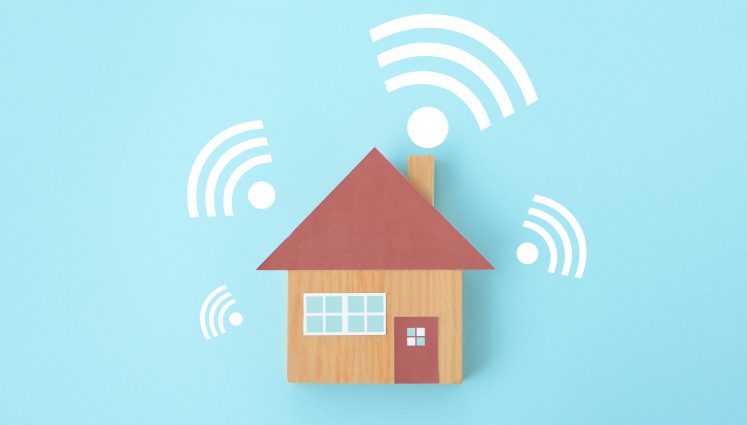
Top 7 Questions About Mesh Wi-Fi
By Distributel
You have questions about mesh Wi-Fi and we have answers.
What Is Mesh Wi-Fi?
Imagine a normal router. That’s probably what you have. It lives next to your modem and directs the Wi-Fi signal all around your house. Okay, now imagine three or four little baby Wi-Fi devices called nodes. They’re installed all around your house—the attic, the basement, the back porch, all the hard-to-reach spots. They talk to your router and spread your Wi-Fi signal much further than you had before. Imagine all the signals as they talk to each other and to the home router. They crisscross your home—like mesh.
Do I Need a Mesh Network?
Probably. Mesh Wi-Fi is great for homes that have spotty Wi-Fi coverage, either because they’re too big or they have dark patches for other reasons—say, a well-insulated basement. If you’re in a small apartment or your home is relatively open and free from barriers, you may not need a mesh network.
On the other hand, if you do have a large home or one with coverage problems, then mesh Wi-Fi could be a good idea. For example, picture an old Toronto is only 15-feet wide but 60-feet deep and three stories tall. There’s a basement and some internal structures that make it hard for Wi-Fi to penetrate. By putting nodes on every floor, all spaced out, good Wi-Fi coverage can be attained.
The other reason to get a mesh Wi-Fi system is you have way more devices than your current setup can handle. Imagine your router as a call centre. If it’s always speaking to 20+ devices in your home at once, it may not be doing the best job. If, however, you expand the “call centre” by adding more Wi-Fi nodes, then the system can do a better job of handling all the signals.
So If I Have Wi-Fi Issues, I Should Buy Mesh Wi-Fi?
Slow down. First, ensure that your current setup is as good as it can be. Put your router in the right spot, make sure your firmware is up to date, and choose the right band. Read this piece on optimizing your home internet.
If you’ve done your best and you still have spotty Wi-Fi, by all means get a mesh system.
What About Wi-Fi Boosters, Extenders, and Repeaters?
All of these devices take the Wi-Fi signal from the home router and amplify it, giving you more Wi-Fi coverage. The three terms can be used somewhat interchangeably.
Mesh Wi-Fi is different. The home router and the different nodes all share the same network name, and they all talk to each other, sending signals to and fro to maximize your network efficiency.
If you have a good router and you just want to make your signal stretch a bit farther, you might just buy a booster/extender/repeater. But if you’re already considering that option, why not just get a beefier network with mesh Wi-Fi system?
Is a Mesh Wi-Fi System More Expensive?
Yes, a mesh Wi-Fi system will be more expensive than a router or even a router plus an extender. Of course, many good internet plans offer mesh Wi-Fi as the new standard.
Is a Mesh Wi-Fi System Easy to Set Up and Manage?
Yes. After you set up your main router in its optimal spot, you can experiment a bit with placing your nodes such that they eliminate your dead zones. After that, you can typically manage your whole network with an app.
Is Mesh Wi-Fi the Best Way to Get Amazing Internet in Every Single Room of My House?
If you had a magic wand (or if you’re building a home from scratch), you’d want Ethernet ports in every room of your house so that all your key devices can have a wired connection at all times.
Of course, Ethernet won’t help if you’re streaming on a tablet, updating your phone, or checking to see who’s at your door. And it’s unlikely that you have Ethernet in every room anyway, so simplest thing is to bathe your home in Wi-Fi, and the best way to do that is with mesh Wi-Fi.
